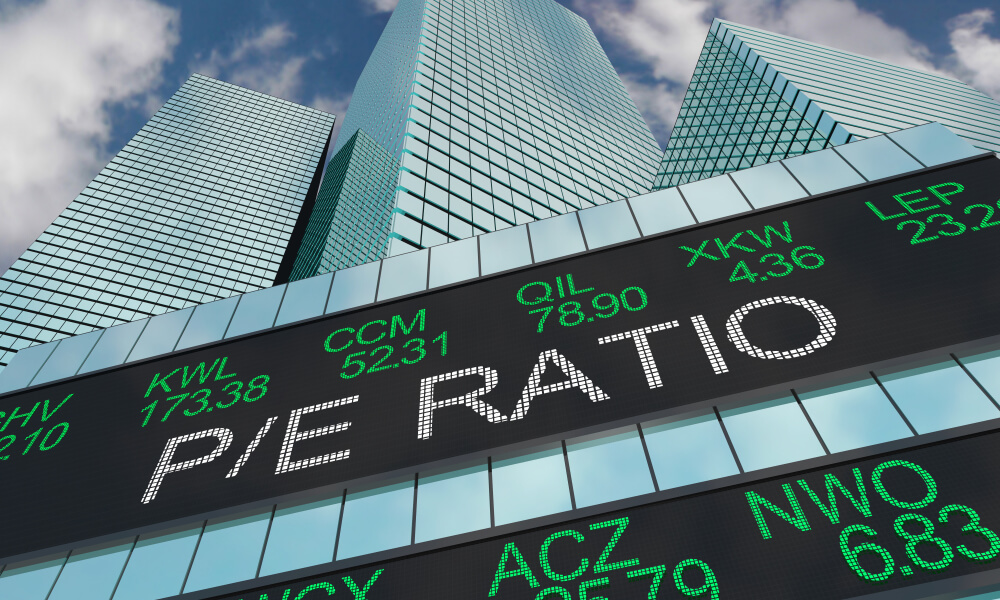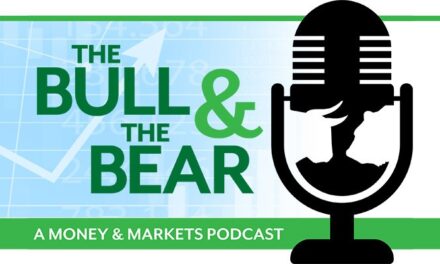When I look at the current stock market, some stock prices are mind-blowing.
For instance:
- Amazon.com Inc. (Nasdaq: AMZN) stock is now over $3,000.
- Tesla Inc. (Nasdaq: TSLA) has soared around 300% this year to over $1,500 per share.
- Netflix Inc. (Nasdaq: NFLX) has climbed above $500 per share.
Company shares have rocketed up off their March lows to new record highs. And their price-to-earnings (P/E) ratios mirror the same movement upward.
P/E ratios are a popular metric for analysts to assess a company’s value. They are also a useful tool when comparing stocks within an industry.
The P/E ratio compares a stock’s current price to the company’s current earnings. To find the P/E ratio, you can divide the company’s stock price by its earnings per share.
The resulting ratio is what investors are willing to pay for every dollar the company earns. For example, a P/E ratio of 20 means you don’t mind spending $20 for every $1 earned by that company.
And that’s why some P/E ratios today would give classic value investors heart palpitations:
- Amazon at 148 P/E.
- Netflix at 104 P/E.
- H&R Block Inc. (NYSE: HRB) at 500 P/E!
These high ratios mean investors are willing to pay a high price. They reason that the company will justify the cost with future growth.
So are high P/E ratios the new normal for investors?
Banyan Hill Publishing’s Jeff Yastine thinks so.
“Higher price-earnings ratios are definitely part of the norm and have been for years,” said Yastine, Editor of Total Wealth Insider.
Yastine argues a low interest-rate environment justifies higher P/E ratios because investors expect little or no inflation.
And the Federal Reserve has already signaled interest rates will stay near zero through at least 2022 as the economy recovers from the shock of the coronavirus pandemic. Right now, the Fed’s benchmark interest rate sits at a range between 0% and 0.25%.
The Connection Between P/E Ratios and Inflation
“You can justify paying a higher price to own an already-expensive asset since you don’t have to worry about inflation eroding away the value of your future profits,” Yastine said.
So, paying a higher price can be OK in this current stock market.
But what happens when inflation returns?
“In stock investing, it’s usually the things we least expect that come and bite us when we’re not looking,” Yastine said. “So the danger comes if our assumptions that ‘inflation is dead’ turn out to be wrong.”
The U.S. inflation rate has crashed to 0.1% for the 12 months ending May 2020, according to the Labor Department. The inflation rate was 2.3% for 2019.
But Yastine is watching other asset classes for signs of inflation coming back.
“In the past two months, oil prices have gone from $12 to $40 a barrel,” Yastine said.
Yastine thinks that a continued climb in oil prices as the economy reopens post-COVID “amid a backdrop where many oil producers have cut production” is a signal of rising inflation.
“It could force investors to reconsider whether inflation really isn’t something to worry about,” Yastine said.
So while we are in a low-inflation, high-P/E ratio environment right now, keep an eye on oil prices and the Fed’s activity in the Treasury market for signs of inflation returning. Staying invested in some companies with high P/E ratios is fine, but watch for these warning signs.




